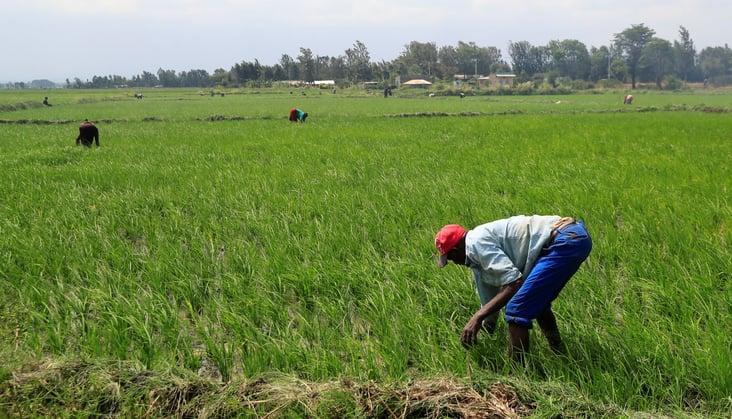Pedro Chilambe
Africa-Press – Lesotho. But as temperatures rise worldwide and drive extreme weather phenomena like El Niño, farming communities are being disproportionately affected. Analysis by United Nations (UN) climate experts shows that climate change has already reduced per capita GDP across Africa by 14%, mainly due to its impacts on agriculture.
With 2024 on track to exceed 1.5 degrees warming and surpass 2023 as the hottest year on record, African farmers have no choice but to adapt to their changing conditions. Such adaptation will be difficult, but the good news is that it is possible.
Through a combination of adequate finance and research into innovative new practices – particularly digital agriculture – farmers and rural communities across the continent can do more than just survive; they can increase their production and boost their livelihoods, all while protecting the ecosystems on which they depend.
At COP28 last month, leaders embraced the potential of agriculture innovation through a series of commitments focused on helping farmers cope with the climate crisis.
They included new investments in the CGIAR global agricultural research initiative, which works exclusively with small-scale farmers in low and middle-income countries.
African governments need innovative financing mechanisms to attract more funding for food system innovation, and more control to determine investment priorities
This was a welcome change because financing for agricultural adaptation has been far from adequate. Even the commitments that emerged from COP28 last year are not enough to fill the gap.
A report from the UN Environment Program found that developing countries will need $215bn to $387bn per year in adaptation finance through the end of the decade, yet in 2023 only $21.3bn was available.
The shortfall is especially large for farmers. Only about 1.7% of financing from global climate funds has flowed to small-scale food producers in developing countries; of that, most is earmarked for reducing emissions, not helping farmers adapt.
African governments need innovative financing mechanisms to attract more funding for food system innovation, and more control to determine investment priorities.
The CGIAR Initiative on Climate Resilience (ClimBeR) has been using simple but powerful business tools to generate the financing African governments need to take agriculture innovations to scale.
I have been working with ClimBeR to help African governments access $30m earmarked for climate adaptation by leveraging climate-smart agriculture investment plans, identifying specific business models and projects that would help mitigate climate risk and promote adaptation within a country’s agricultural value chains.
We build detailed investment cases and implementation plans for these projects, which can then be used to attract sustainable investment from both the public and private sectors. Such investment is crucial to expanding access to tools and technologies with the potential to make farmers more resilient to rising temperatures.
An example of one such project or investment is hermetic bags for long-term grain storage identified in the investment plan for Kenya, a simple business idea that, with further investment, would decrease post-harvest loss, provide a more stable food supply, and even help farmers leverage their stored grain to access finance.
Creating an investment package for hermetic bags turns the idea into more than just a government project or humanitarian activity; it becomes a business that banks or private sector companies can invest in, which makes it more sustainable in the long run.
In partnership with Lend XS, ECLOF bank in Kenya and Agora Microfinance in Zambia, CGIAR is also developing a climate credit scoring tool, which aims to evaluate the climate hazards and adaptive capacity of farmers, both for the dairy sector and for the maize mixed systems.
This allows financial institutions to better evaluate the risks of agricultural loans, ultimately giving better-adapted farmers more access to finance.
Innovative financial tools like these should incentivise farmers to adopt climate-smart practices, while giving lenders the information they need to assess credit risk in a widely misunderstood sector.
It is crucial that as many of these projects as possible are led by national and local governments, who are best positioned to drive climate adaptation projects aimed at farmers, promoting locally-led climate action.
Governments have extensive networks already in place to reach rural populations; what they lack is the ability to access the funds they need to implement projects that could benefit farmers and local communities. But the people living through the challenges of climate change must also be able to provide their own solutions.
With Africa struggling to meet its climate financing requirements, it is essential to focus on projects that will bring sustainable and long-term benefits to the small-scale farmers and rural communities on which the continent’s food supply depends.
As global attention turns to climate-smart practices, we need more ways to identify, fund and scale up the innovations with the most potential to empower these farmers and allow them to thrive in a changing world.
Source: Theafricareport
For More News And Analysis About Lesotho Follow Africa-Press






